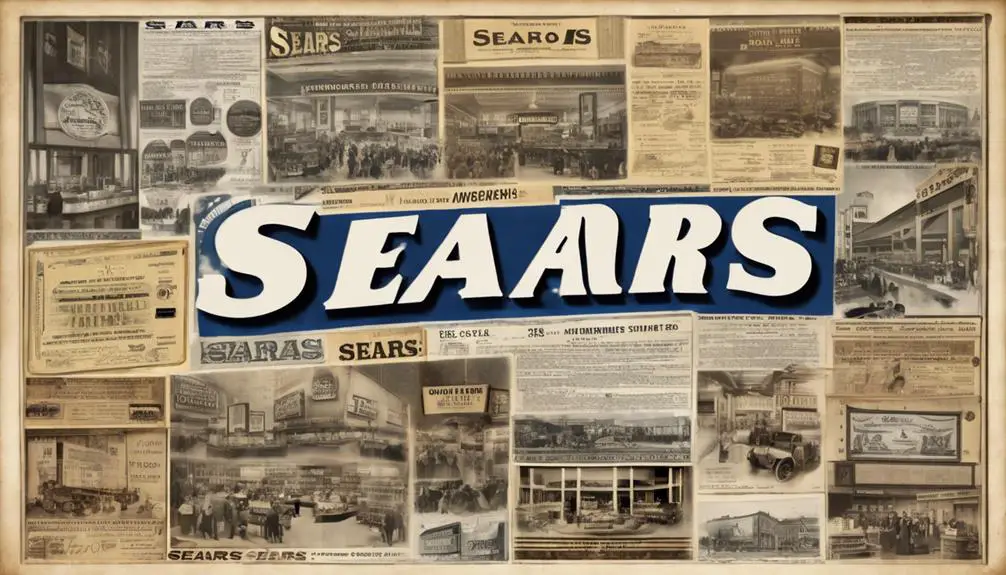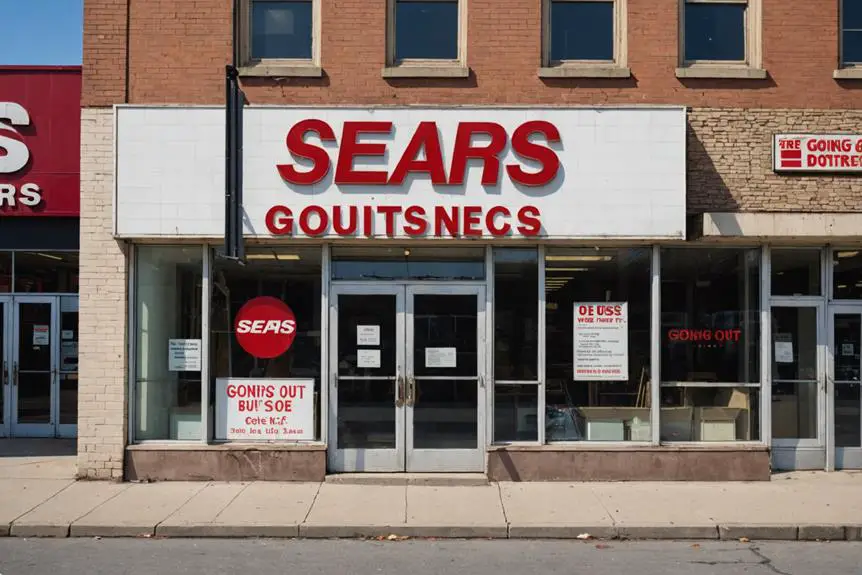So, you wanna know who owns Sears? Well, it's Transformco, led by Eddie Lampert, the guy who was once the CEO of Sears. After filing for bankruptcy in 2018, Sears got a fresh start under ESL Investments. It's been a wild ride for this iconic brand! Transformco focuses on reviving Sears with some new ideas, like boosting online sales and reopening a few stores. But it's not all rainbows and butterflies. Sears is still figuring things out after going from over 3,500 stores down to just a handful. Want to learn what's next for this classic company? Keep on exploring!
Ownership History

Sears, Roebuck and Co. has a rich ownership history that reflects its evolution over more than a century. It all started back in 1893 when Richard Warren Sears and Alvah Curtis Roebuck founded the company. Can you imagine that? The company initially made waves in retail by transforming the shopping experience through the democratization of consumer goods, enabling access to a wide range of products via mail-order catalogs. Fast forward to 2005, Kmart Holding Corporation stepped in, acquiring Sears for around $12 billion. This merger created Sears Holdings Corporation, with Edward S. Lampert as a major player.
But things took a turn when Sears Holdings filed for bankruptcy in 2018. With a wave of his magic wand—or really just savvy business moves—Lampert's ESL Investments gained control during those tough times, snagging the company for about $5.2 billion. Since then, Sears has been operating under ESL Investments, still trying to navigate the tricky retail market.
Even today, Sears remains a subsidiary, and while it faces challenges, it continues to adapt. Isn't it fascinating how a company can change hands and still aim to survive? The ownership history of Sears shows us just how resilient businesses can be, even when the odds are stacked against them!
Transformco's Role
Transformco's acquisition of Sears Holdings Corporation marked a significant turning point in the company's history. After Sears filed for Chapter 11 bankruptcy in 2018, Transformco swooped in, buying the assets for around $5.2 billion. And guess what? You still see some familiar faces like the Sears and Kmart stores! Eddie Lampert, the guy behind this move, was previously the CEO of Sears. He knows the ropes and has been steering Transformco through these tricky waters.
Since then, Transformco's been busy with asset management strategies to breathe new life into the Sears brand. They've focused on store reopenings, digital expansion, and even creating new retail formats to keep up with what you want. Isn't it cool to see a classic brand try to adapt?
As of 2024, Transformco still operates a handful of Sears stores, battling it out in a competitive retail world. They're not giving up easily! Instead, they're working hard to stabilize the business and make your shopping experience better. So, next time you walk into a Sears or Kmart, think about the journey they took to get there!
Financial Challenges

Facing substantial financial challenges, Sears Holdings filed for Chapter 11 bankruptcy protection on October 15, 2018. With total liabilities hitting a staggering $11.3 billion, it's clear the company faced serious financial difficulties. Their revenue dropped from $53 billion in 2012 to just $14 billion in 2018. Yikes! That's a big blow.
So, what went wrong? Here are some key issues:
- Long Sales Declines: Sears racked up 24 consecutive quarters of reduced sales.
- Net Loss: In 2018 alone, they reported a net loss of $1.9 billion.
- Store Count Reduction: They went from over 3,500 stores in 2005 to less than 500 by 2019 due to asset liquidation.
It's no wonder they struggled to maintain a solid customer base! The constant revenue decline, paired with ineffective business strategies, really hurt. You have to wonder, what could they have done differently? Despite their efforts, the path to recovery seems tough. As you follow this story, think about how big changes can impact even the most iconic brands.
Brand Management
Steering through the complexities of brand management is essential for Sears as it endeavors to rebuild its identity and connect with consumers. Owned by ESL Investments after a bankruptcy auction in 2019, Sears has some unique challenges ahead. Take Kenmore, for example—this iconic brand has been around since 1913, offering appliances that are still loved today. We can't forget the Shop Your Way platform, either. This rewards program aims to keep customers coming back, earning points on their purchases, which is a smart move!
Now, let's talk about the DieHard brand. It was sold off to Advance Auto Parts, showing Sears' strategy to focus on its core offerings and shed those non-core brands. Speaking of brands, remember Lands' End? Though it was spun off in 2014, it still has ties to Sears through retail offerings.
As Sears navigates these waters, effective brand management will be key. By focusing on the strengths of Kenmore and Shop Your Way, while carefully managing what to keep or let go, Sears can craft a fresh identity that resonates with today's consumers. Isn't that exciting?
Future Outlook

Sears' future outlook hinges on its ability to adapt to the rapidly evolving retail environment. With ESL Investments at the helm, the company's got some big challenges ahead after filing for bankruptcy in 2018. You might've noticed their store count has plummeted to just 10 full-line locations in the U.S. and one in Puerto Rico. That's a huge drop!
To stay afloat, Sears is focusing on a few key strategies:
- Embracing e-commerce: They know online shopping is where it's at, so they're ramping up their digital presence.
- Restructuring and streamlining: By trimming non-core businesses, they can put more energy into what really matters.
- Building customer loyalty: Keeping customers happy is essential if they want to survive.
Sears is also working through asset liquidation to tackle those hefty liabilities, which hit $11.3 billion during bankruptcy. It's a tough road, but if they can adapt, revitalize their brand, and connect with shoppers, there's hope yet. So, will Sears rise from the ashes? Only time will tell!
Frequently Asked Questions
Who Is the Current Owner of Sears?
You'll find that the current owner of Sears, post-bankruptcy, is ESL Investments. Despite challenges in Sears history, including reduced stores and fierce competitors, they aim for a revival through improved customer service and online offerings.
Does the Sears Corporation Still Exist?
Yes, the Sears Corporation still exists, albeit in a diminished state. Its history reflects retail evolution, bankruptcy impact, and store closures, but it's adapting through e-commerce challenges and new business strategies to maintain brand legacy and customer loyalty.
Who Bought Sears and Kmart?
You'll see that Sears' history intertwines with Kmart's acquisition, leading to corporate restructuring amid financial challenges. Bankruptcy impacted retail strategies, brand evolution, and market competition, ultimately affecting consumer perception and resulting in numerous store closures.
What Is the New Name for Sears?
The Sears brand history reflects significant retail industry changes. You'll notice e-commerce impacts and bankruptcy implications led to store closures. Revitalization strategies focus on consumer habits, enhancing loyalty programs, and analyzing marketing campaigns for better engagement.
Conclusion
So, who owns Sears? Well, it's Transformco, but they've got quite the mountain to climb! With all the ups and downs, the brand's future is a bit of a mystery. But hey, there's still hope for a comeback, right? After all, who wouldn't love to see Sears back in action? Let's keep our fingers crossed and maybe even check out their latest deals. You never know what treasures you might find!





Aw, this was a very nice post. In thought I wish to put in writing like this additionally – taking time and actual effort to make a very good article… but what can I say… I procrastinate alot and in no way seem to get something done.